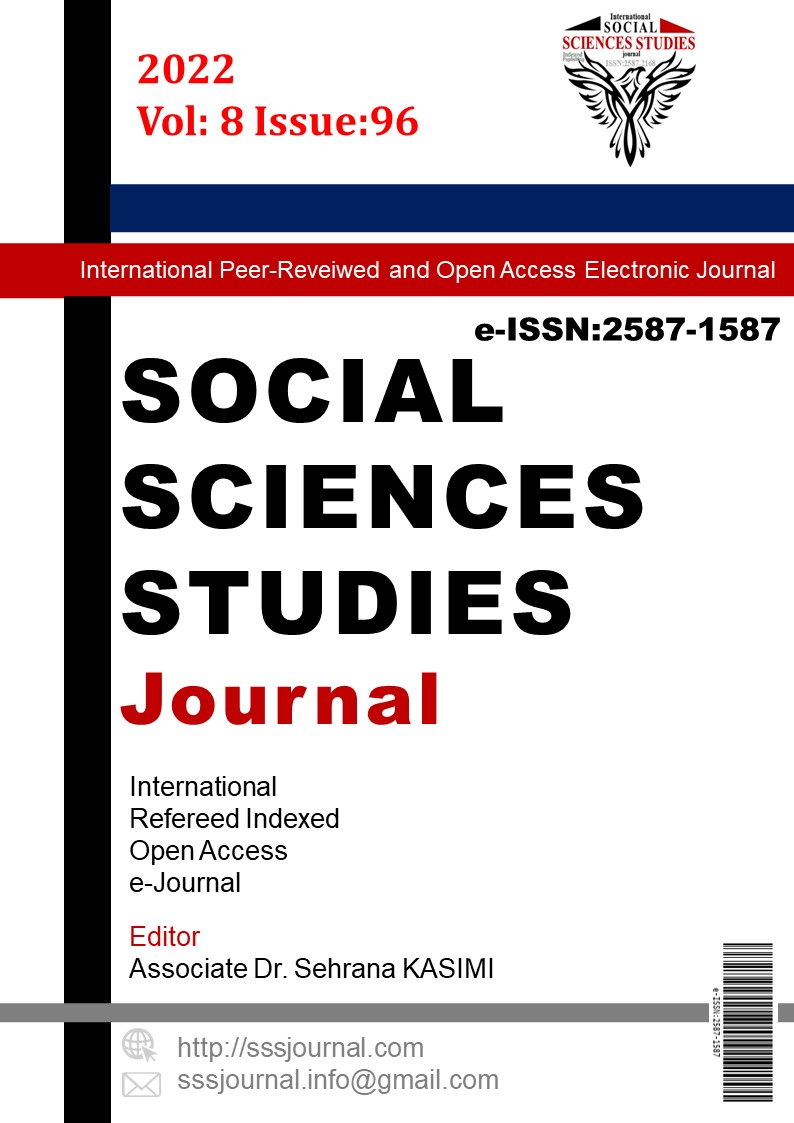Author :
Abstract
After the 1960 military intervention, Turkey was governed by a new constitution until 1980. The 1961 Constitution led to very important changes through the institutions it included. It was inevitable that these structural change processes in the political, economic and cultural fields would also be seen in the demographic field. In the demographic structure of Turkey, from the 1960s to the 1980s, a series of changes occurred in many areas such as the rate of the country's population living in cities, the education level of the population, the average life expectancy, and the business lines in which the employed people work. Every nation that wants to use its natural, economic and cultural assets efficiently needs some information about the quantity and quality of human resources in its country, therefore it carries out censuses. Therefore, migration and urbanization phenomenon between 1960-1980, applied population policies and censuses stand out as the topics that need to be addressed in order to reveal the demographic structure of Turkey in this period. Socioeconomic change in Turkey showed itself in this period with the rapid increases in the population of the cities. The main reason for the rapid population growth in cities is internal migration and its effect is quite high. In the second stage of the demographic process, especially those who migrated from the countryside to the cities were added to the demographic change process and this process continued throughout the country. The acceleration of urbanization in Turkey has been realized since the 1960s. In this period, while a rapid increase was observed in the population of existing cities, many settlements gained city status at the same time.
Keywords
Abstract
1960 askeri müdahalesinden sonra Türkiye, 1980’e kadar yeni bir anayasa ile yönetildi. 1961 Anayasası kendisine yer verdiği kurumlar aracılığıyla çok önemli değişimlere yol açtı. Politik, ekonomik ve kültürel alanda yaşanan bu yapısal değişim süreçlerinin demografik alanda da görülmesi kaçınılmazdı. Türkiye’nin demografik yapısında 1960’lı yıllardan 1980’li yıllara doğru gelindiğinde, ülke nüfusunun kentlerde yaşama oranı, nüfusun eğitim düzeyi, ortalama yaşam süreleri ve istihdam edilenlerin çalıştığı işkolları gibi pek çok alanda bir dizi değişim meydana gelmiştir. Doğal, ekonomik, kültürel varlıklarını verimli bir şekilde kullanmak isteyen her ulus, ülkesindeki insan kaynağının niceliği ve niteliği hakkında birtakım bilgilere ihtiyaç duyar, bu nedenle de nüfus sayımları gerçekleştirir. Dolayısıyla 1960-1980 arası yaşanan göç ve kentleşme olgusu, uygulanan nüfus politikaları ve nüfus sayımları Türkiye’nin bu dönemdeki demografik yapısını ortaya koymak için ele alınması gereken başlıklar olarak öne çıkmaktadır. Türkiye’de sosyoekonomik değişim, bu dönemde kendini, kentlerin nüfusunda meydana gelen hızlı artışlarla göstermiştir. Kentlerde meydana gelen hızlı nüfus artışının temel nedeni içgöçtür ve bunun etkisi bir hayli fazladır. Demografik sürecin ikinci etabında, bilhassa kırdan kente göç edenler demografik değişim sürecine eklemlenmiş ve bu süreç, yurt geneline yayılarak devam etmiştir. Türkiye’de kentleşmenin hız kazanması 1960’lı yıllardan itibaren gerçekleşmiştir. Bu dönemde, var olan kentlerin nüfusunda hızlı bir artış gözlenirken, aynı zamanda çok sayıda yerleşim birimi de kent statüsüne kavuşmuştur.
Keywords
- Aydoğan, E. & Çoban, E. (2016). “Türkiye’de Nüfus Sayımları ve Uygulanan Nüfus Politikaları”, Yaşam Bilimleri
- Aydoğan, E. & Çoban, E. (2016). “Türkiye’de Nüfus Sayımları ve Uygulanan Nüfus Politikaları”, Yaşam Bilimleri Dergisi, Cilt:6, Sayı:2/1, ss. 113-126.
- Doğan, M. (2011). “Türkiye’de Uygulanan Nüfus Politikalarına Genel Bakış”, Marmara Coğrafya Dergisi, Sayı:23, Ocak, ss. 293-307.
- Gelekçi, C. (2015). “1960 Sonrası Dönemde Türkiye’de Nüfus Yapısı ve Bazı Temel Özellikleri Üzerine Tespitler”, Sosyoloji Konferansları, Sayı:52, ss.587-607.
- Genç, F. N. (2014). “Gecekonduyla Mücadeleden Kentsel Dönüşüme Türkiye’de Kentleşme Politikaları”, Adnan Menderes Üniversitesi Sosyal Bilimler Dergisi, C:1, S:1, ss: 15-30
- Kasarcı, R. (1993). “Türkiye'de Nüfus Gelişimi”, Türkiye Coğrafyası Araştırma ve Uygulama Merkezi Dergisi, Sayı 5, ss.248-266
- Kaştan, Y. (2010). “Cumhuriyet Döneminde Nüfus Hareketlerinin Fonksiyonu”, Atatürk Üniversitesi Sosyal Bilimler Enstitüsü Dergisi, Sayı 7, ss: 65-76.
- Koç, İ. & Eryurt, M. A. & Adalı, T. & Seçkiner, P. (2008). “Türkiye'nin Demografik Dönüşümü”, Hacettepe Üniversitesi Nüfus Etütleri Enstitüsü Yayınları, Ankara.
- Kongar, E. (2008). 21. Yüzyılda Türkiye 2000’li Yıllarda Türkiye’nin Toplumsal Yapısı, 41. bs. , İstanbul, Remzi Kitabevi.
- Sencer, Y. (1979) . Türkiye’de Kentleşme, Kültür Bakanlığı Yayınları, Ankara.
- Sertkaya Doğan, Ö. & Bostan, H. (2019). “Türkiye’nin Demografik Dönüşümü ve Nüfus Projeksiyonlarına Göre Fırsatlar”, Doğu Coğrafya Dergisi, Sayı:41, ss.61-90.
- Soysal, M. (1969). Dinamik Anayasa Anlayışı, Ankara Üniversitesi Sosyal Bilimler Fakültesi Yayınları, Ankara.
- Yılmaz, E. & Çitçi, S. (2011). “Kentlerin Ortaya Çıkışı ve Sosyo-Politik Açıdan Türkiye’de Kentleşme Dönemleri”, Elektronik Sosyal Bilimler Dergisi, Cilt:10, Sayı:35, ss.252-267.
